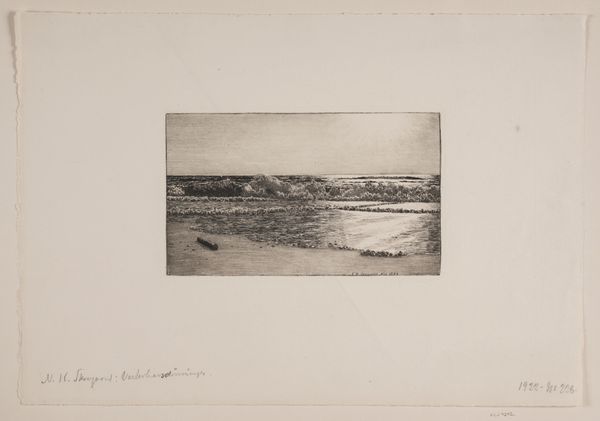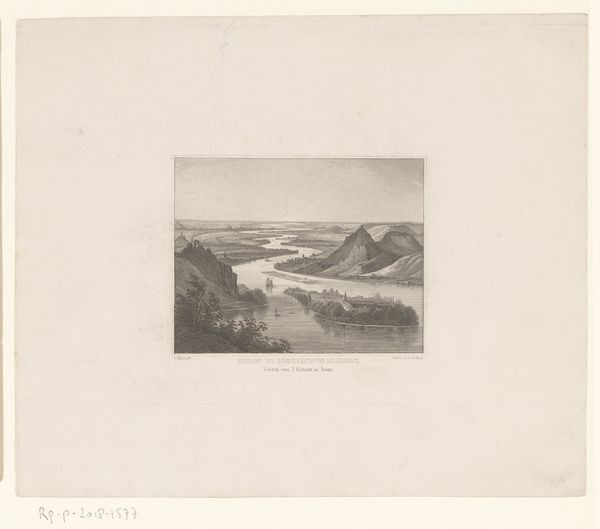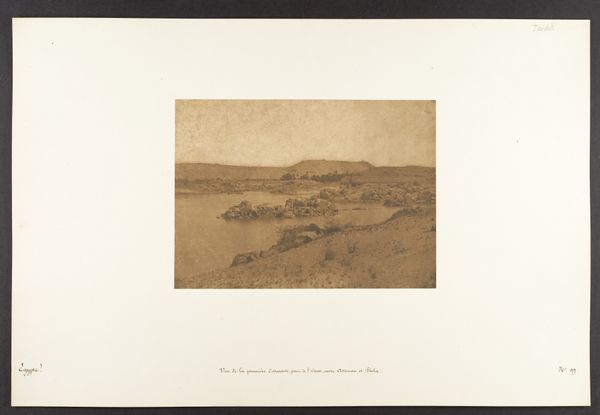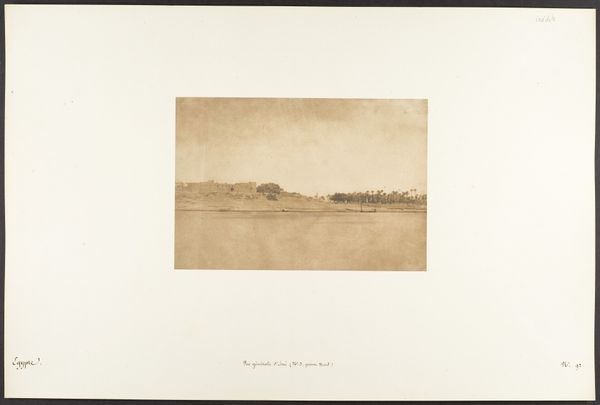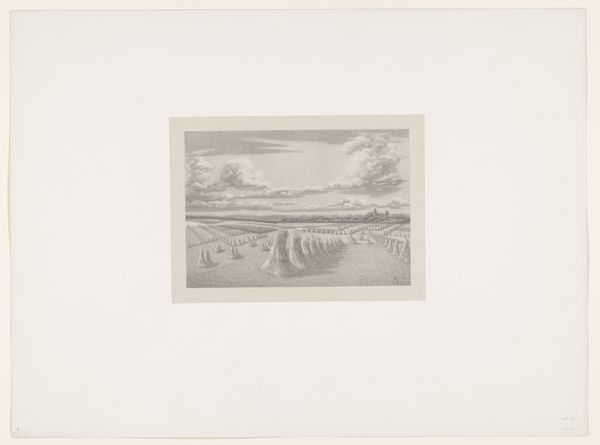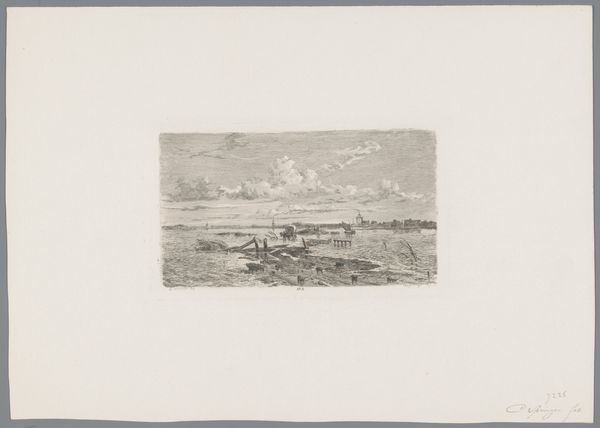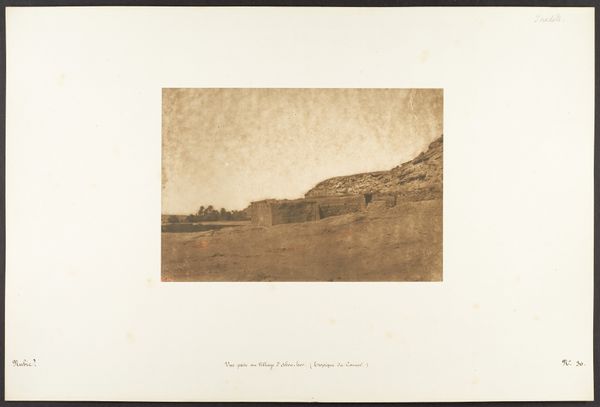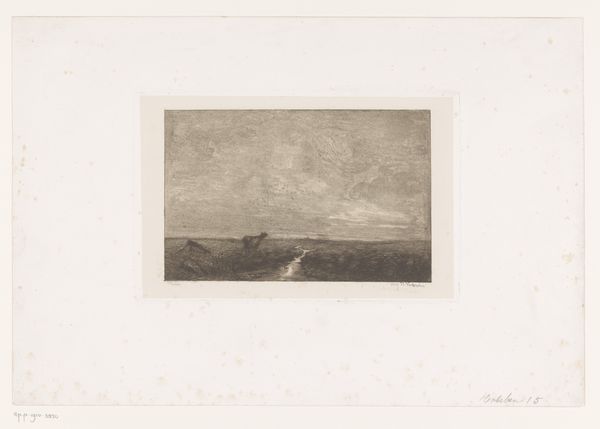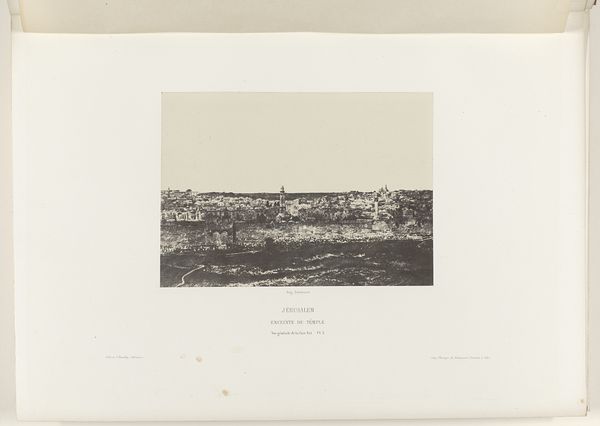
print, etching
# print
#
etching
#
landscape
#
realism
Dimensions: 102 mm (height) x 167 mm (width) (billedmaal)
Editor: This is "Tisvilde strand," a landscape by John Lübschitz from 1889. It's an etching, a type of print. It feels very bleak to me; it gives the sense of a cold day by the sea. What do you see in this piece? Curator: Formally, I'm struck by the horizontal organization of the image. Note the stratification created by the sky, sea, and foreground. The tonality is very subtle, rendered exquisitely through the meticulous technique of etching. How does the linear quality contribute to your interpretation of the piece as "bleak?" Editor: Well, the lines in the foreground rocks and water are so dense and heavy, creating a contrast to the open, brighter sky. It feels unbalanced and kind of oppressive. Curator: Interesting. Consider how the density of line also contributes to a sense of texture. Notice how Lübschitz has created the illusion of depth and tactility in a two-dimensional medium through the skillful manipulation of line and tone. Does that change your sense of the composition at all? Editor: It does! It makes me think more about the technical skill involved, which is impressive. So, rather than bleakness, is it more about how well the artist captured a realistic sense of place using etching? Curator: Precisely. The print transforms the beach into a study of lines and light. Consider how the artist has created visual interest and an emotive response through purely formal elements. Editor: I now realize my initial feeling was tied more to the formal arrangement of these aspects than to anything symbolic. The heaviness of the lines actually creates depth! Thanks! Curator: Absolutely. These objective qualities shape subjective interpretations of an artwork. Focusing on those formal elements yields a greater appreciation.
Comments
No comments
Be the first to comment and join the conversation on the ultimate creative platform.
